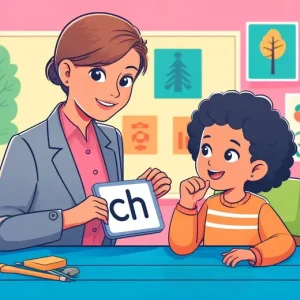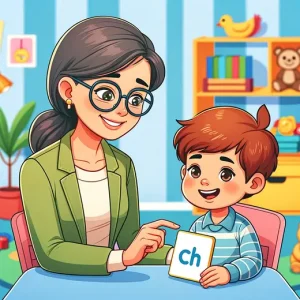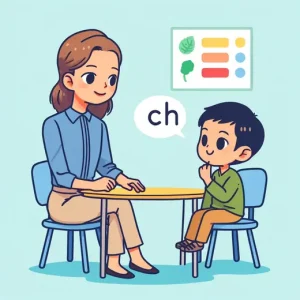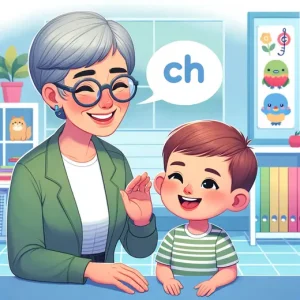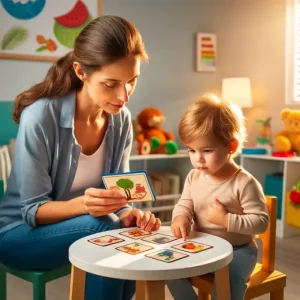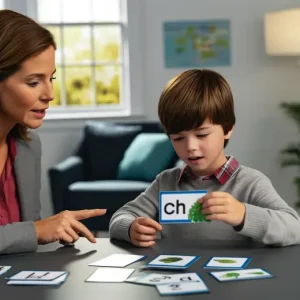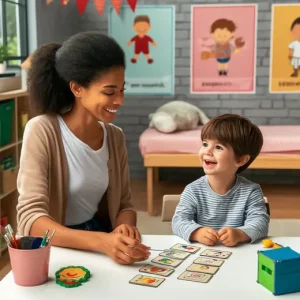Early Identification/ Warning Signs in child development
By Bincy Chacko
Last Updated: May 29, 2023
Early identification refers to recognizing any disability or developmental variation in early childhood and understanding the need for early intervention. Hence systematic monitoring of children’s early growth and development is essential for identifying delays. There are ‘red flags’ in the field of child development. These warning signs in a child’s development need prompt attention and action. It is essential to know these red flags, as ‘forewarned is forearmed’.
However, a lack of ready accessibility and awareness of these warning signs in children’s development is hampering early identification and appropriate intervention for conditions such as ASD, ADHD, Dyspraxia and more. It is complicated further when many parents wait for over 12 months from the time they first raise concerns regarding their child’s behaviour or development to the time they receive an assessment or a diagnosis.
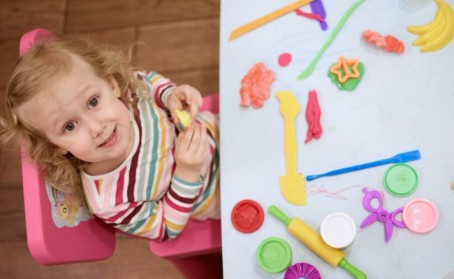
Parents’ concerns regarding their child’s behaviour and development can be vague, making it challenging to be identified sooner. Moreover, the signs and symptoms of ASD or ADHD can be remarkably diverse and varied, making them difficult to be diagnosed quickly without undertaking an in-depth assessment.
To understand more about Autism Spectrum Disorder, a condition frequently mentioned in the context of early identification, read more about autism basics.
Warning Signs in Child development
Each item or red flag listed below would be of some concern in the absence of anything else; they may just need continued observation or a discussion with your health visitor. However, the presence of multiple red flags in an individual domain or across more than one field deserves prompt attention, exploration and assessment.
For those interested in exploring the complexities of ADHD further, learn more about managing ADHD
Social Interaction & Communication Development
- Avoids eye contact with others
- Lack of reciprocal social smile
- Inability to communicate using pointing, facial expressions, and gestures,
- Poor attention or inability to stay focused on an activity
- Focuses on unusual objects for extended periods or observes them from unique angles
- Enjoys these distinct activities more than interacting with other children or parents
- Does not seek love and approval from a caregiver or parent
- Lacks interest in sharing or enjoying with others
- Preference to play alone
- Withdraws or spends time ‘in a world of his own’.
- Does not respond to name call
- Gets unusually frustrated when trying to do simple tasks
- Difficulty in seeing a coherent whole, instead focus on small features in a picture
- Dislikes hugs, kisses, cuddles and close physical contact
- Mis-judges personal space
- Frequently interrupts or intrudes on others
Behaviours / Personality Development
- Unusual motor mannerisms, e.g., hand flapping, spinning, staring into space, rocking, or tiptoeing
- Restricted range of interests and activities, e.g., playing with a single toy or a minimal range of toys
- Difficulty coping with change or abnormal reaction to a change in routine
- Displays aggressive or uncooperative behaviours
- Is significantly overactive or oppositional for his age
- Displays temper tantrums or violent behaviours daily
- Shows unusual attachments to toys, objects, or parts of objects
- Does not play with the toys in a way they are designed for
- Spends a lot of time lining things up or putting things in a particular order
Hearing & Language Development
- Does not startle by loud noises
- Resists loud sounds, e.g., hand dryers, by covering hands over ears
- Ears appear small or deformed
- Talks in a very loud or incredibly soft voice
- Seems to have difficulty responding when called from across the room
- Does not make sounds in response to others after 12 months
- Has difficulty understanding simple sentences after three years of age
- Fails to develop sounds or words that would be appropriate for his/her age
- Cannot chew or choke on food or drink.
- Little variation in tone, intonation, pitch, or rhythm of speech
- Stumbling or getting stuck on words or sounds (stuttering)
- Excessive drooling
- Problems with swallowing or chewing or eating foods with certain textures (gagging).
- By age 2½, a child’s words are not understood except by family members
- Frustrated when verbally communicating
Gross Motor Development
- Has limp body posture, especially compared to other children of the same age
- Has stiffness in arms and or legs
- Reduced movements of arms or legs
- Uses one side of the body in preference to the other, especially under 18 months
- Is very clumsy or poorly coordinated when compared with peers of the same age
- Difficulties in keeping balance while sitting, walking, playing or frequent falling
- Asymmetry (i.e. a difference between two sides of the body)

Fine Motor & Vision Development
- Turns, tilts, or holds head in an unusual position when trying to look at or follow an object
- Seems to have difficulty finding or picking up small objects dropped on the floor
- Lacks pincer grasp even after 10-12 months of age
- Infants who are unable to hold or grasp an adult finger or a toy/object for a short period of time
- Unable to play appropriately with a variety of toys; or avoids crafts and manipulatives
- Consistently ignores or has difficulty using one side of the body; or uses one hand exclusively
- Has tremors in limbs
- Rubs eyes frequently
- Eyes appear to be crossed or turned in or out
- Closes one eye when trying to look at distant objects
- Brings objects too close to eyes to see
- Difficulty in manipulating small objects after three years of age
- Avoidance of tasks with small objects
- Bumping into things, tripping
- Constant jiggling or moving of eyes side-to-side
Developmental Milestones vs. Warning Signs
| Age Range | Typical Milestones | Potential Warning Signs |
|---|---|---|
| 0-6 Months | – Smiles spontaneously, especially at people – Coos and makes gurgling sounds – Follows objects with eyes – Holds head up and begins to push up when lying on tummy | – Does not respond to loud sounds – Has difficulty focusing eyes on objects – Does not smile at people – Does not coo or make sounds – Seems very stiff or very floppy |
| 6-12 Months | – Babbles with expression and copies sounds – Responds to own name – Sits without support – Pulls to stand – Begins to use fingers to point at things | – Does not respond to sounds around them – Does not try to get your attention through gestures – Unable to sit with assistance – Does not babble or babble lacks consonant sounds – Does not show interest in games like peek-a-boo |
| 12-18 Months | – Says several single words – Points to show someone what they want – Walks alone – Plays simple pretend games (e.g., feeding a doll) – Follows simple directions like “pick up the toy” | – Does not speak at least a few words – Does not point to indicate wants or interests – Cannot walk by 18 months – Does not imitate actions or words – Does not notice or mind when a caregiver leaves or returns |
| 18-24 Months | – Speaks in two-word phrases (e.g., “more milk”) – Begins to run – Can follow simple instructions – Begins to play alongside other children – Points to things or pictures when they are named | – Does not use two-word phrases – Cannot follow simple instructions – Lack of interest in other children or caretakers – Does not imitate actions or speech – Cannot walk steadily |
| 2-3 Years | – Speaks in sentences of 3 to 4 words – Can play simple make-believe games – Climbs well – Shows a wide range of emotions – Notices when others are hurt or upset | – Has difficulty with stairs – Shows little interest in interactive games – Does not engage in pretend play – Has very limited speech or difficulties with sentence formation – Does not understand simple instructions |
| 3-4 Years | – Tells stories – Can play cooperatively with other children – Understands the idea of “mine” and “yours” – Can sing a song or say a poem from memory – Can catch a bounced ball most of the time | – Shows no interest in interactive games or other children – Cannot grasp crayons or show control with them – Does not engage in fantasy play – Has trouble understanding simple concepts (big vs. small, etc.) – Cannot throw a ball overhand |
To complement your understanding of language development, explore our guide on speech and language milestones.
ASD-specific red flags
If certain child development milestones are not met, it is common to have Autism on mind. But here are the list of developmental milestones that are specific to Autism red flags.
- Lack of response to their name by 12-15 months
- Lack of pointing to indicate interest by 12-15 months, instead leads adults by hand
- Preference to play alone or be alone
- Lack of pretend play, e.g. feeding the dolly, by 18-24 months
- Uncomfortable with eye contact and hence active avoidance of eye contact
- Recurrent meltdowns or tantrums
- Difficulty in understanding other’s feelings or thoughts
- Inappropriate response to social situations
- Motor mannerisms, e.g. rocking back and forth, tiptoe walking, hand flapping, spinning
- Intense like or intense distress with certain sensations of sound, light, texture, taste, or smell
- Echoing words or phrases heard, repeatedly
- Giving inappropriate or unconnected answers to questions
- Lack of back-and-forth conversation or conversations only related to their interests
- Unusual sensory interests – visually squinting or looking at things out of the corner of the eye; smelling, licking, mouthing objects; hypersensitive hearing
- Unusual preoccupation with objects (e.g. light switches, fans, spinning objects, vertical blinds, wheels, balls)
- High pain tolerance
- Insistence on maintaining sameness in routine, activities, clothing, etc.
For families navigating the journey of autism, discovering effective therapies and activities can provide much-needed support.
Sensory
Problem signs- if a child’s responses are exaggerated or diminished and do not seem typical for the child’s age, consider this a red flag.
Understanding sensory processing challenges is crucial. Gain further insights by reading about sensory processing disorder.
Auditory
- Responds negatively to unexpected or loud noises
- Is distracted or has trouble functioning if there is a lot of background noise
- Enjoys strange noises/seeks to make noise for noise’s sake
- Seems to be “in his/her own world.”

Visual
- Squinting, or looking out of the corner of the eye
- Crosses boundary lines while coloring
- Avoids eye contact
- Stares at bright, flashing objects
Taste/Smell
- Avoids certain tastes/smells
- Avoids certain foods which are part of a child’s diet
- Chews/licks non eatables
- Gags easily
- Picky eater, especially regarding textures
Movement and Body Position
- Continually seeks out all kinds of movement activities (being whirled by an adult, playground equipment, moving toys, spinning, rocking)
- Becomes anxious or distressed when goes above the ground
- Poor endurance – tires easily; Seems to have weak muscles
- Avoids climbing, jumping, uneven ground or roughhousing
- Moves stiffly or walks on toes. Clumsy, falls frequently
- Does not enjoy a variety of playground equipment
- Enjoys exaggerated positions for long periods (e.g. lies head-upside-down off the sofa)
Touch
- Becomes upset during grooming (hair cutting, face washing, fingernail cutting)
- Has difficulty standing in line or close to other people; or stands too close, always touching others
- Is sensitive to certain fabrics
- Fails to notice when face or hands are messy or wet
- Cannot tolerate hair washing, hair cutting, nail clipping, teeth brushing
- Craves lots of touch: heavy pressure, long-sleeved clothing, hats and certain textures
Activity Level
- Always on the go; difficulty paying attention
- Very inactive, under-responsive
Emotional/Social
- Needs more protection from life than other children
- Has difficulty with changes in routines
- Is stubborn or uncooperative; gets frustrated easily
- Has difficulty making friends
- Has difficulty understanding body language or facial expressions
- Does not feel positive about own accomplishments
Early identification is crucial in optimizing outcomes. Moreover, timely neurodevelopmental assessments can prevent the emergence of secondary problems such as anxiety, low self-esteem, low mood, school refusal, disengagement in learning, a feeling of helplessness, despair, self-harm, and even being excluded from school.
Common Developmental Disorders and Their Signs
| Disorder | Key Signs | Recommended Actions |
|---|---|---|
| ASD (Autism Spectrum Disorder) | – Lack of eye contact – Delayed speech and language skills – Repetitive behaviors (e.g., hand-flapping, rocking) – Difficulty with social interactions – Unusual reactions to sensory inputs | – Consult a pediatrician or a developmental specialist for an evaluation – Consider early intervention services like speech therapy, occupational therapy, and behavioral interventions |
| ADHD (Attention Deficit Hyperactivity Disorder) | – Difficulty maintaining attention – Impulsive behavior – Excessive activity that is not appropriate for the age – Difficulty organizing tasks | – Seek evaluation from a healthcare provider specializing in ADHD – Educational interventions and behavioral strategies – Medication may be considered in some cases |
| Dyspraxia (Developmental Coordination Disorder) | – Clumsiness – Difficulty with fine motor skills (e.g., writing, buttoning clothes) – Challenges with gross motor skills (e.g., jumping, running) – Poor balance and coordination | – Obtain a comprehensive assessment by an occupational therapist – Engage in targeted physical therapy and occupational therapy |
| Dyslexia | – Difficulty reading and spelling – Challenges in decoding words – Problems with understanding the sounds within words – Slow and labor-intensive reading and writing | – Evaluation by an educational psychologist or a specialist in learning disabilities – Structured literacy programs focusing on phonics and multi-sensory learning methods |
| Language Disorder | – Limited vocabulary – Difficulty putting words together into sentences – Challenges understanding what others say – Difficulty with using words in socially appropriate ways | – Consult with a speech-language pathologist for an evaluation – Speech and language therapy focusing on language development |
| Sensory Processing Disorder | – Overly sensitive to sensory inputs like sounds, textures, and lights – Under-responsive to sensory stimuli – Unusual interest in sensory aspects of the environment (e.g., textures) | – Seek assessment from an occupational therapist with experience in sensory processing issues – Sensory integration therapy and strategies to manage sensory sensitivities |
Early identification of the child’s difficulties and early help can offer children the support needed to reach their full potential. It can improve the quality of a child’s life and enable them to perform better at school and in life later. The earlier the intervention, the greater the benefits.
The journey towards managing developmental delays is filled with potential success stories. Learn about successful therapy options and how they can make a difference.
conclusion
Early identification and intervention in child development are critical steps in supporting children with developmental challenges to reach their full potential. By recognizing the warning signs of conditions such as ASD, ADHD, and Dyspraxia early, parents and caregivers can ensure that children receive the necessary assessments and interventions. This proactive approach helps in addressing developmental delays and variations effectively, facilitating better outcomes in the child’s social, emotional, and academic life.
The role of awareness and education in the early detection of developmental issues cannot be overstated. Increased access to information and resources empowers families and professionals to act swiftly in response to the early signs of developmental concerns. It is through the collective efforts of the wellness hub – community, healthcare providers, and educational systems that children can be given the support and opportunities they need to thrive, underscoring the importance of early identification in fostering a supportive and inclusive society for all children.
Frequently Asked Questions:
1. What is early identification in child development?
Early identification in child development involves recognizing signs of developmental delays, disabilities, or variations in children at an early stage. It is crucial for enabling timely intervention and support, optimizing a child’s growth and development potential.
2. Why is early identification important?
Early identification is important because it allows for the prompt initiation of interventions that can significantly improve developmental outcomes. It helps in addressing challenges early on, potentially reducing the impact of developmental delays on a child’s social, emotional, and educational achievements.
3. What are some common warning signs of developmental delays in children?
Common warning signs include lack of eye contact, delayed speech and language skills, unusual motor mannerisms (such as hand-flapping or spinning), difficulty with social interactions, and extreme reactions to sensory stimuli. Each child is unique, so variations in development should be discussed with a healthcare professional.
4. How can parents and caregivers recognize early signs of ASD, ADHD, or Dyspraxia in children?
Parents and caregivers can recognize early signs by monitoring their child’s development closely and noting behaviors such as limited social interaction, difficulty maintaining attention, poor motor coordination, and any significant deviations from typical developmental milestones.
5. What should parents do if they notice developmental warning signs in their child?
If parents notice any developmental warning signs, they should consult with a healthcare professional, such as a pediatrician or child development specialist, for a comprehensive evaluation. Early consultation and assessment are key to determining the need for any specific interventions or supports.
6. How can early intervention benefit children with developmental delays?
Early intervention can provide children with tailored therapies and support systems that address their specific needs, enhancing their abilities to communicate, interact socially, and achieve academic success. It also supports families in understanding and nurturing their child’s development effectively.
7. What resources are available for parents concerned about their child’s development?
Resources for concerned parents include pediatric healthcare providers, early intervention programs, child development centers, and support organizations dedicated to specific conditions like ASD and ADHD. Many online resources and local community services also offer guidance and support.
8. Can a child outgrow developmental delays with early intervention?
While some children may show significant improvements and catch up to their peers with the help of early intervention, others may continue to need support throughout their lives. The impact of early intervention varies but generally leads to better outcomes than if delays were addressed later.
9. How often should a child be screened for developmental milestones?
It is recommended that children be screened for developmental milestones during regular pediatric visits at key ages, such as at 9 months, 18 months, and 24 or 30 months. Additional screenings may be advised if the child is at risk for developmental problems.
10. What role do educators play in the early identification of developmental delays?
Educators play a critical role by observing children in a learning environment and noting any developmental concerns. They can communicate these observations to parents and recommend seeking professional advice, thus becoming an essential link in the early identification process.
About the Author:
Bincy Chacko, Occupational Therapist:
Bincy Chacko, MSc DS (EI), is an Occupational Therapist at Wellness Hub, specializing in school and rehabilitation OT, therapy for autism and pediatric OT. With 11 years as a Physiotherapist and Early Interventionist, Bincy enhances diverse learning and maximizes functional independence in individuals with various needs.
Book your Free Consultation Today
Parent/Caregiver Info:
Client’s Details:
* Error Message
